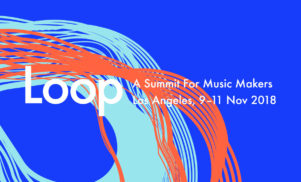Native Instruments’ latest Maschine controller is a refreshed version of its cut-down Mikro model with almost no visible screen. Scott Wilson finds out if the new format makes the portable controller more challenging to use.
Native Instruments’ beat-making hardware Maschine has undergone a lot of facelifts over the years. The core idea – an MPC-style controller hooked up to a software host – hasn’t changed (except on 2016’s sequencer tool, Maschine Jam), but with each successive generation NI has added new features (a touch strip for effects, audio interface, color screens) to make it a more useful studio and performance tool. The new Maschine Mikro, however, is more notable for what it cuts back on – namely screen size.
The first Maschine Mikro, released in 2011, reduced the controller to a more portable size by making a few compromises – the dual screens became a single LCD and all the knobs were jettisoned in favor of just one. The new Mikro, which is a smaller version of last year’s Maschine MK3, takes a similar approach: it’s only got one knob but keeps the useful buttons for toggling between pad, keyboard and chord modes, as well as variation and duplication. The Mikro MK3 doesn’t inherit its older sibling’s color screen though. In fact, it’s so small that it can only display two lines of text.

As a design choice, it makes sense. The Mikro MK3 is much less cluttered and the extra space gained has allowed NI to fit in a touch strip for tweaking effects and performing. On the other hand, some users may find themselves squinting to see it properly and it can only be used for a few simple tasks. One of my favorite aspects of the full-size MK3 is being able to slice samples and effects from the hardware itself – tasks that are impossible on the Mikro hardware. So what does the new Mikro offer besides portability? The answer, is a more focused experience.
For some users (me included) the full-size Maschine MK3’s color screens can be just as distracting as a laptop; it’s all too easy to get lost in them tweaking drum synths and effects, slicing up samples or editing notes. On the Mikro MK3 there’s none of that, so by necessity you tend to be more focused on what’s often the most difficult part of the process – sketching out a beat. So, while the Mikro is first and foremost a more portable version of the Maschine for making music on the move, the more streamlined experience may well be more attractive to certain studio users.
In use, the Mikro MK3 is just as great a tool for sketching out rhythms as its full size equivalent. Its pads, which are inspired by the Maschine MK3, are nice and large, so there’s plenty of room for finger drumming. The Note Repeat button (used primarily for playing flams and rolls on the fly) is actually in a slightly better place than on the full size-version; it’s below the touch strip so you can hold it down with your index finger and tweak effects with the middle finger of your left hand while you tap out beats with your right. It’s a small improvement, but it makes it much easier to add flair to your beats.
Unfortunately, preset browsing with the smaller OLED display isn’t as slick as it is with dual screens. It actually requires more use of the Maschine software than I’d anticipated; though you can scroll through sounds and kits by pressing the browser button and turning the knob, you can only scroll within the category highlighted in the software. NI offsets this slightly with a dedicated button that you can use to quickly highlight your favorite sounds for easy recall later; it’s a more speedy way of switching kits that makes the Mikro feel more like a hardware drum machine than its sibling.
Editing and mixing sounds is far better with the knob than browsing. If you want to tweak the volume level of an individual drum sound, you just press the volume button, hold down the corresponding pad and turn the knob. Similarly, tuning can be modified and swing applied per sound using the same technique. It’s a really immediate way of getting what you want from the mix, without the need for a bank of knobs or sliders that would otherwise clutter up the front panel.
NI’s decision to include a dedicated sampling button, however, strikes me as a little odd. Unlike last year’s Maschine MK3, the new Mikro doesn’t have a built-in audio interface, and the screens are no good for waveforms anyway, so any sample editing by necessity has to be done in the software via an external audio interface or microphone. Unless NI is planning some other features via a future update, the sampling button’s only real function is to trigger the sample record process.




If you’re an experienced Maschine user with a full-size MK3, there’s no real need to worry about the new Mikro unless you desperately need a smaller version for traveling with. Yes, it offers a more focused production experience, but anyone who’s well versed in the hardware will probably have developed screen coping strategies anyway. For anyone taking their first steps into Maschine though, the Mikro MK3 is the best introduction to NI’s beat-making system. It’s streamlined and simple enough to teach the basics without being too overwhelming and at $199/£189 for the controller, Maschine 2 software and a huge collection of kits, it’s a steal.
Scott Wilson is FACT’s tech editor. Find him on Twitter
Read next: IK Multimedia UNO synth review – A contender for the budget synth crown





























